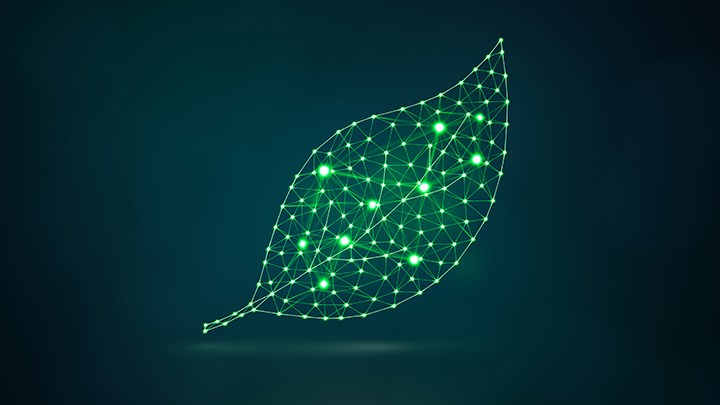Sustainable development in higher education

The purpose of this webpage is to provide a basic understanding of one of Örebro University’s missions as a government authority: to integrate sustainable development into education. Here we describe, using text and video, the basic concepts of sustainable development. In addition, we provide other resources for developing the format and content of courses and study programmes from different sustainability perspectives.
Key concepts
Sustainable development has three dimensions:
Social sustainability considers our fundamental human rights and social justice.
Environmental sustainability is using natural resources without undermining the ecosystems of future generations.
Economic sustainability aims at counteracting poverty and promoting economic development without negatively affecting social or environmental sustainability.
Our planetary resources and how we consume and distribute them are made up of complex systems that affect, reinforce, and weaken each other through so-called synergies. For example, the depletion of the planet’s oceans and marine resources affects climate change and biodiversity. In turn, these activities fundamentally impact poverty, health, equality, and so on.
Unforeseen problems usually do not have obvious, clear-cut solutions and are called wicked problems. These include climate change, desertification, poverty, pandemics, armed conflicts, and depletion of marine resources and biodiversity.
In 2015, the UN General Assembly and the world’s heads of state and government adopted the global goals that define Agenda 2030. The UN defines sustainable development as development that meets the needs of the present without compromising the ability of future generations to meet their own needs. The aim is that these goals will contribute to a socially, economically, and ecologically sustainable development and that they will be achieved by 2030. According to Chapter 1, Section 5 of the Higher Education Act, universities and colleges must report how they have developed their processes to promote sustainable development.
In order to deal with problems that are complex and unstructured and urge social change that contributes to a sustainable future requires our students to develop specific key competencies during their studies. These key competencies go beyond professional skills and include:
- Systems-thinking competence – the ability to recognise and understand conditions and analyse complex systems.
- Anticipatory competence – the ability to understand and evaluate different possible future scenarios.
- Normative competence – the ability to understand and reflect on the norms and values that underlie one’s actions and those of others.
- Strategic competence – the ability to make values and decisions that matter in a larger context.
- Interpersonal competence – the ability to learn from, understand and collaborate with others.
- Critical-thinking competence – the ability to reflect and question norms, practices, and opinions.
- Self-awareness competence – the ability to continually evaluate and further motivate one’s actions; and to deal with one’s feelings and desires.
- Integrated problem-solving competence – the ability to overarchingly apply different problem-solving approaches to complex problems and develop viable solutions that promote sustainable development.
Getting started with education for sustainable development
To begin the work of integrating sustainable development into the programme, we recommend that the course coordinator, together with the programme coordinator, organise a course team meeting to start the development work. During this development meeting, the course team works together to map out the different course components to identify which elements of sustainable development already exist in the programme. The course team then reviews which components could be developed in terms of sustainable development and draws up a simple development plan based on one or more of the identified course components. The development efforts may involve, for example, utilising the resources and teaching tips further down this page, reading a joint article in the course team and then discussing it at a new course meeting, booking time for a collegial exchange of experience with another course team that has more experience working with sustainable development, or ordering consultation or pedagogical support from the Centre for Academic Development. Remember that all development work is good, regardless of its scope. It is better to reflect on and develop a small part of the programme than nothing at all.
In order to begin efforts on integrating sustainable development into programme and course syllabuses, we recommend that teaching teams, together with programme coordinators, form a working group. This working group then reviews the programmes by making a progression plan to identify:
1) where sustainable development is mentioned in the programme and
2) review where and which course components can be linked to sustainable development but are not expressed.
A proposal for such a progression plan is found here, which your working group may use to get started. In this analysis, the idea is not only to identify links to sustainable development but also gender and gender equality perspectives in education, which is also part of the university’s mandate as a government authority. In addition to sustainable development and gender and gender equality perspectives, we recommend that a situation analysis of the programme’s specific knowledge fields be carried out simultaneously.
In the spring of 2022, a university-wide situation assessment was conducted on the sustainable development efforts in education at Örebro University. Use the report found here as a starting point for discussion and future development work.
The Platform for a Sustainable Future (PSF@ORU) is a hub for the work on sustainable development at Örebro University. In addition to collaboration and research, PSF@ORU work actively to integrate sustainable development in education at the course and programme level.
Read more
Inforum (Örebro University's intranet) contains Challenge 2030 – Resource bank for sustainable development in education. Here, teachers with a login can find suggestions and examples of teacher activities, course planning and other inspiring materials.
About sustainable development at Örebro University
Örebro University's sustainable development strategy and action plan
Education for Sustainable Development Goals Learning Objectives, UNESCO, (2017)
